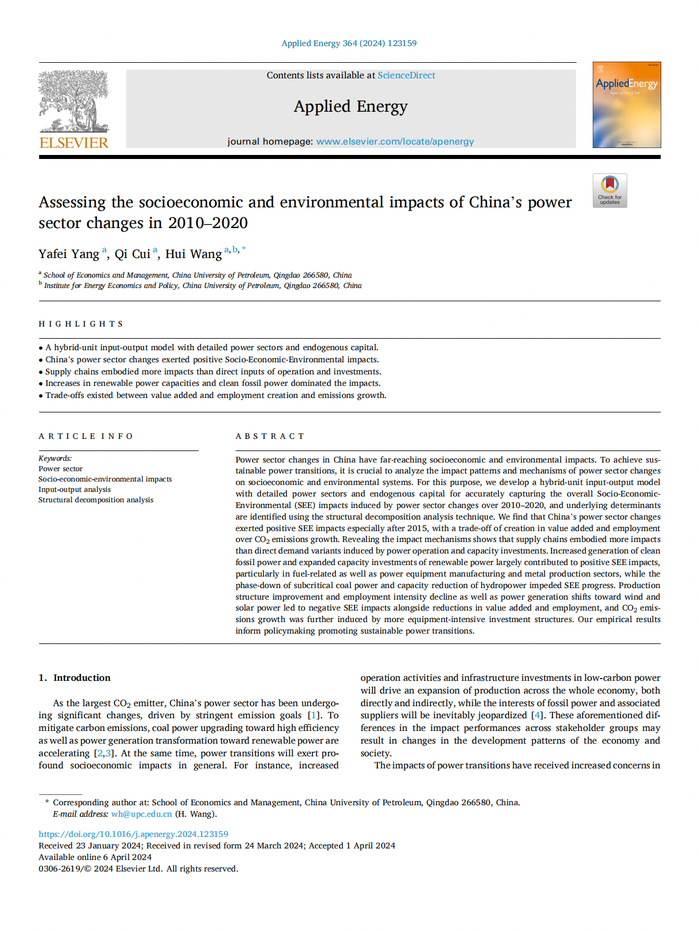Power sector changes in China have far-reaching socioeconomic and environmental impacts. To achieve sustainable power transitions, it is crucial to analyze the impact patterns and mechanisms of power sector changes on socioeconomic and environmental systems. For this purpose, we develop a hybrid-unit input-output model with detailed power sectors and endogenous capital for accurately capturing the overall Socio-Economic-Environmental (SEE) impacts induced by power sector changes over 2010–2020, and underlying determinants are identified using the structural decomposition analysis technique. We find that China's power sector changes exerted positive SEE impacts especially after 2015, with a trade-off of creation in value added and employment over CO2 emissions growth. Revealing the impact mechanisms shows that supply chains embodied more impacts than direct demand variants induced by power operation and capacity investments. Increased generation of clean fossil power and expanded capacity investments of renewable power largely contributed to positive SEE impacts, particularly in fuel-related as well as power equipment manufacturing and metal production sectors, while the phase-down of subcritical coal power and capacity reduction of hydropower impeded SEE progress. Production structure improvement and employment intensity decline as well as power generation shifts toward wind and solar power led to negative SEE impacts alongside reductions in value added and employment, and CO2 emissions growth was further induced by more equipment-intensive investment structures. Our empirical results inform policymaking promoting sustainable power transitions.
主要创新点:
构建了拓展中国电力生产部门和内生化资本的混合单位投入产出模型;量化了2010-2020年中国电力生产转型的社会经济环境影响并揭示了影响路径、关键因素及三种影响之间的协同与抵消作用。

原文链接:https://doi.org/10.1016/j.apenergy.2024.123159
Edited:Xie Danyang



